Midlatitude Cyclones, Thunderstorms, and Tornadoes: Key Concepts and Features
1/48
There's no tags or description
Looks like no tags are added yet.
Name | Mastery | Learn | Test | Matching | Spaced |
|---|
No study sessions yet.
49 Terms
Microscale
< 1km, short duration
Mesoscale
up to 300-400 km
Synoptic-scale
> 1000 km
Midlatitude (Extratropical) Cyclones
Form from temperature contrasts between air masses
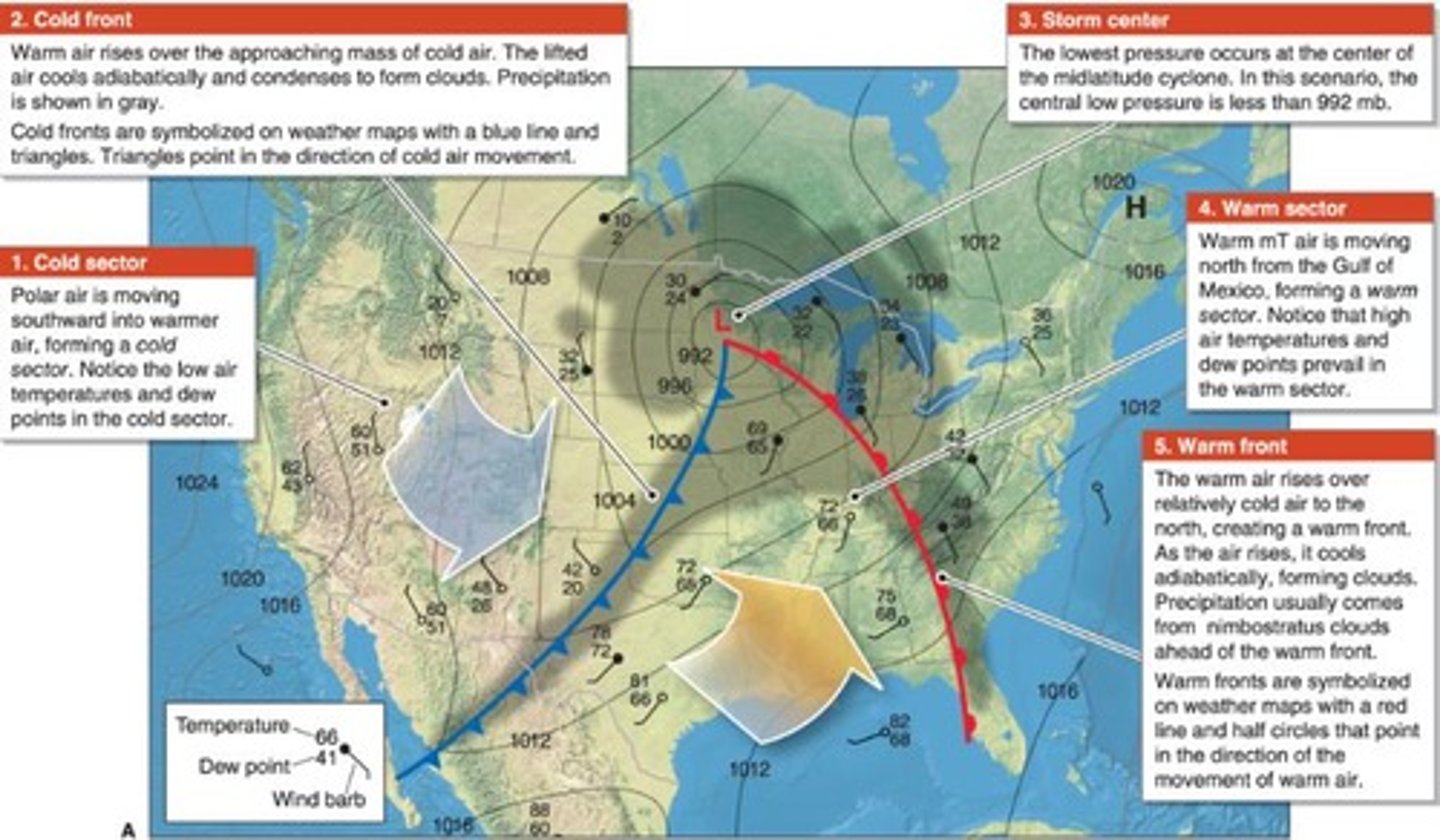
Cyclogenesis
Occurs from fall through spring at 30° to 70° latitude, downwind of mountain ranges, and warm water downwind of cold surface
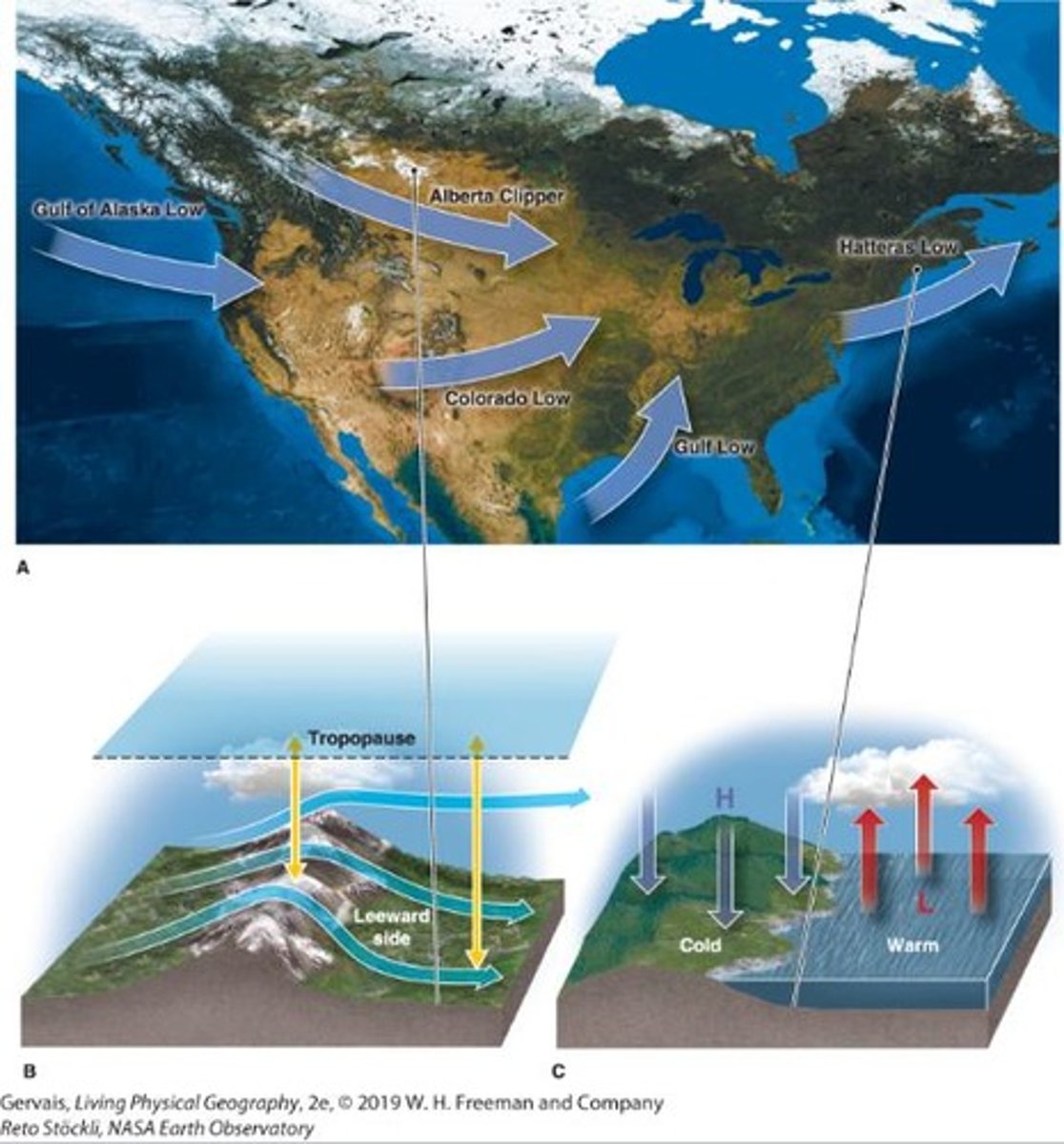
Warm air sector
Sector of the storm with the highest dew point temperatures, located between warm front and cold front
Life Cycle of a Cyclone
1 to 2 weeks
Cold Front
Thunderstorms and heavy rain are found along this front
Lake-Effect Snow
Cold air moves over large warm water bodies, leading to evaporation and abundant snowfall amplified by orographic uplift
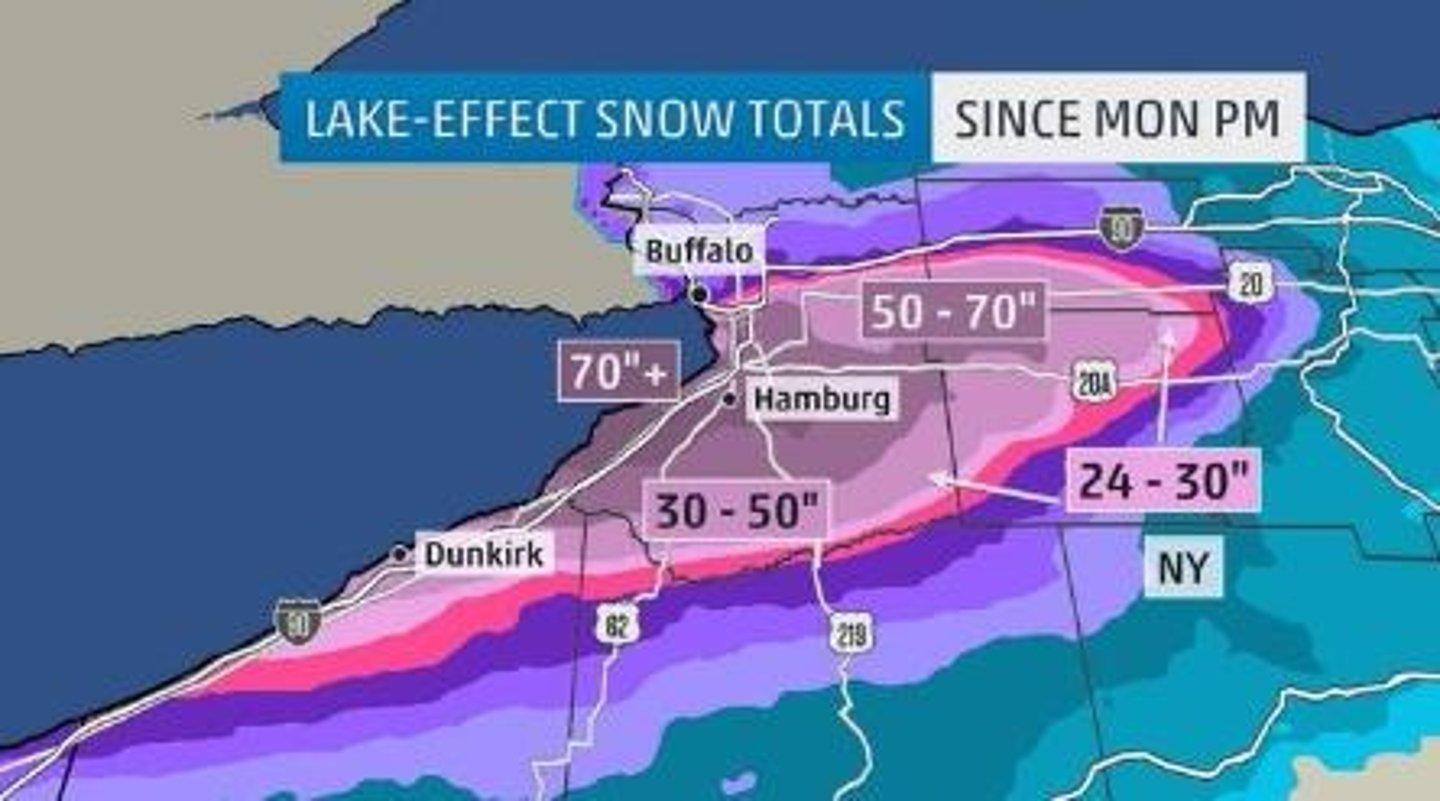
Atmospheric River
Narrow bands of atmospheric moisture, thousands of km long, producing torrential rain and/or snow, with 3 to 7 existing at a given time
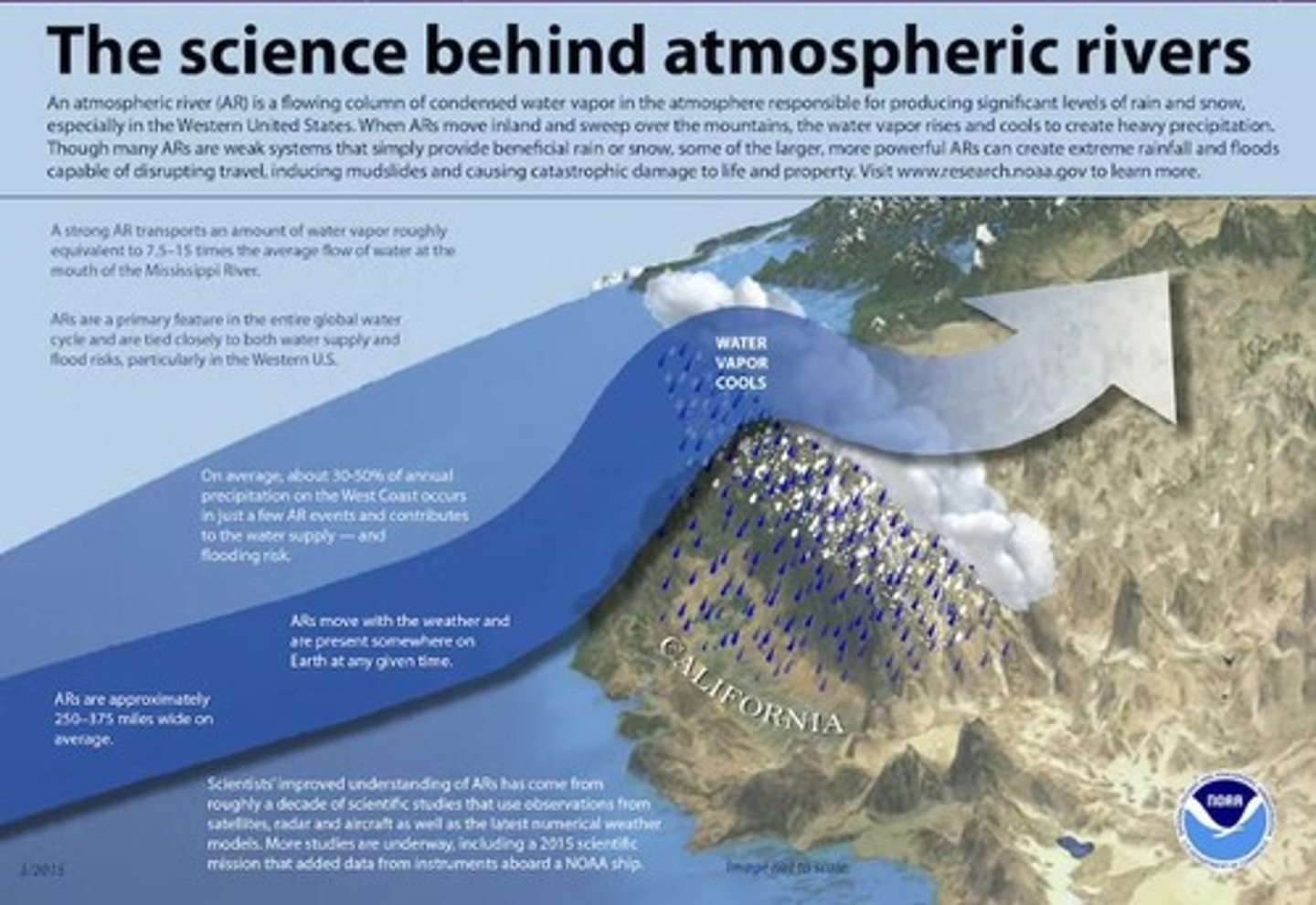
Pineapple Express Thunderstorms
Localized storms that are microscale and mesoscale, forming in isolation but most frequently embedded in synoptic-scale systems
Cumulonimbus Clouds
Produce lightning and thunder, with approximately 40,000 occurring per day and 2,000 at any moment

Wind Shear
Changes in wind speed and direction with altitude, contributing to severe thunderstorms
Absence of Thunderstorms
Found in Antarctica
Gust Front
Feature in squall line thunderstorms that generates new thunderstorm cells
Derecho
Wind speeds > 93 km/h (58 mph) for distance > 400 km (249 miles)
Convective Available Potential Energy (CAPE)
> 4500 Joules/kg
Mesocyclone
Feature in a supercell thunderstorm generated by wind shear
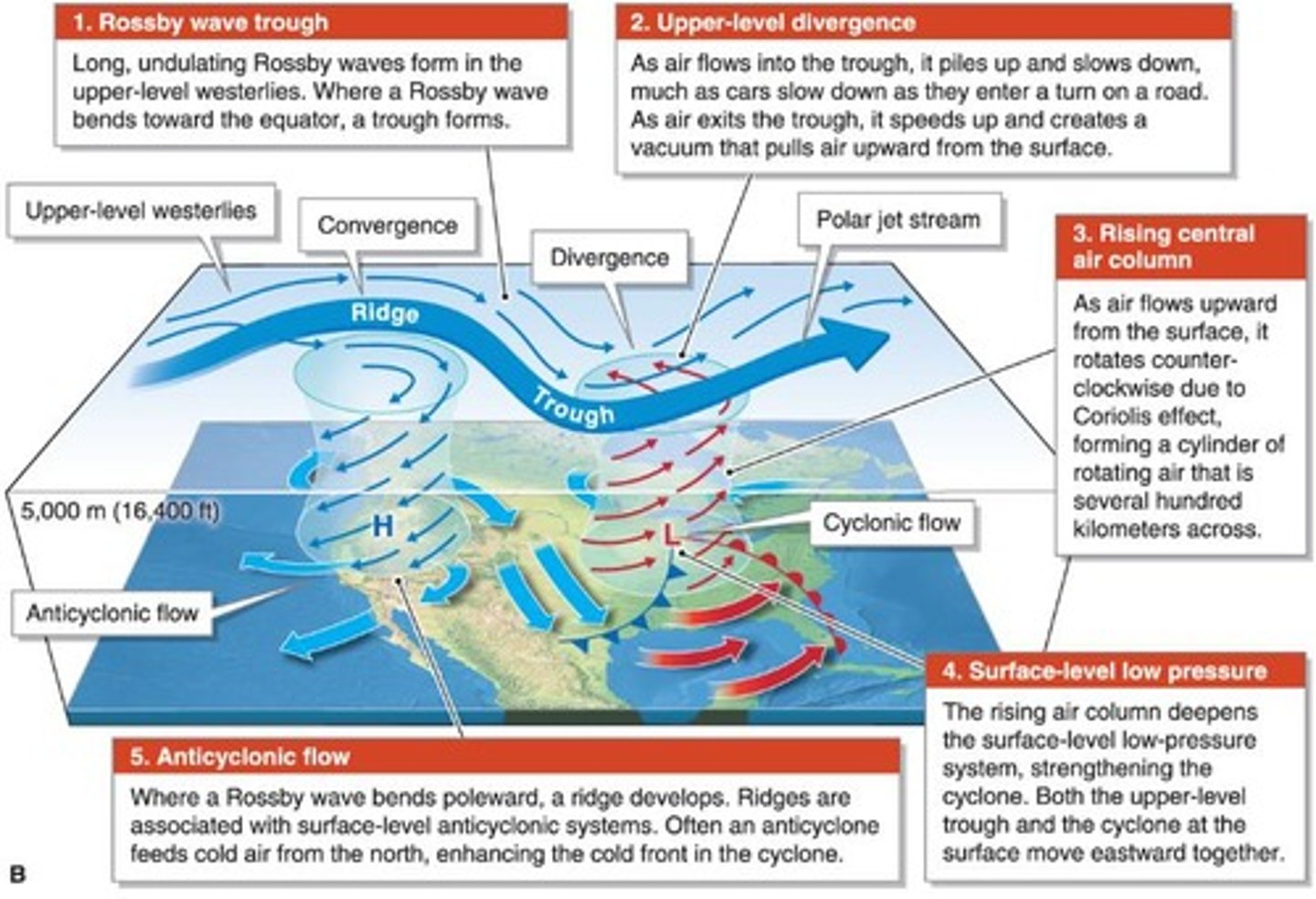
Lightning Facts
Average 500 people struck; 49 people killed each year, with Florida being #1
Odds of Being Struck by Lightning
1 in 12,000 chance
30/30 Rule
30 seconds between flash and sound indicates 10 km distance; go inside and wait 30 minutes after last sound
Distance to Lightning
Count seconds between flash and thunder, divide by 5 to get distance in miles
Ground strikes
Side flash that short circuits heart, brain and nervous system.
Hot Spots
Regions such as South and mountains where lightning strikes are more frequent.
Heat lightning
A distant storm that you can't hear.
Venezuela
Country that experiences the greatest number of lightning strikes each year.
Tornado
A narrow, violently rotating column of air extending from the base of a thunderstorm to the ground.
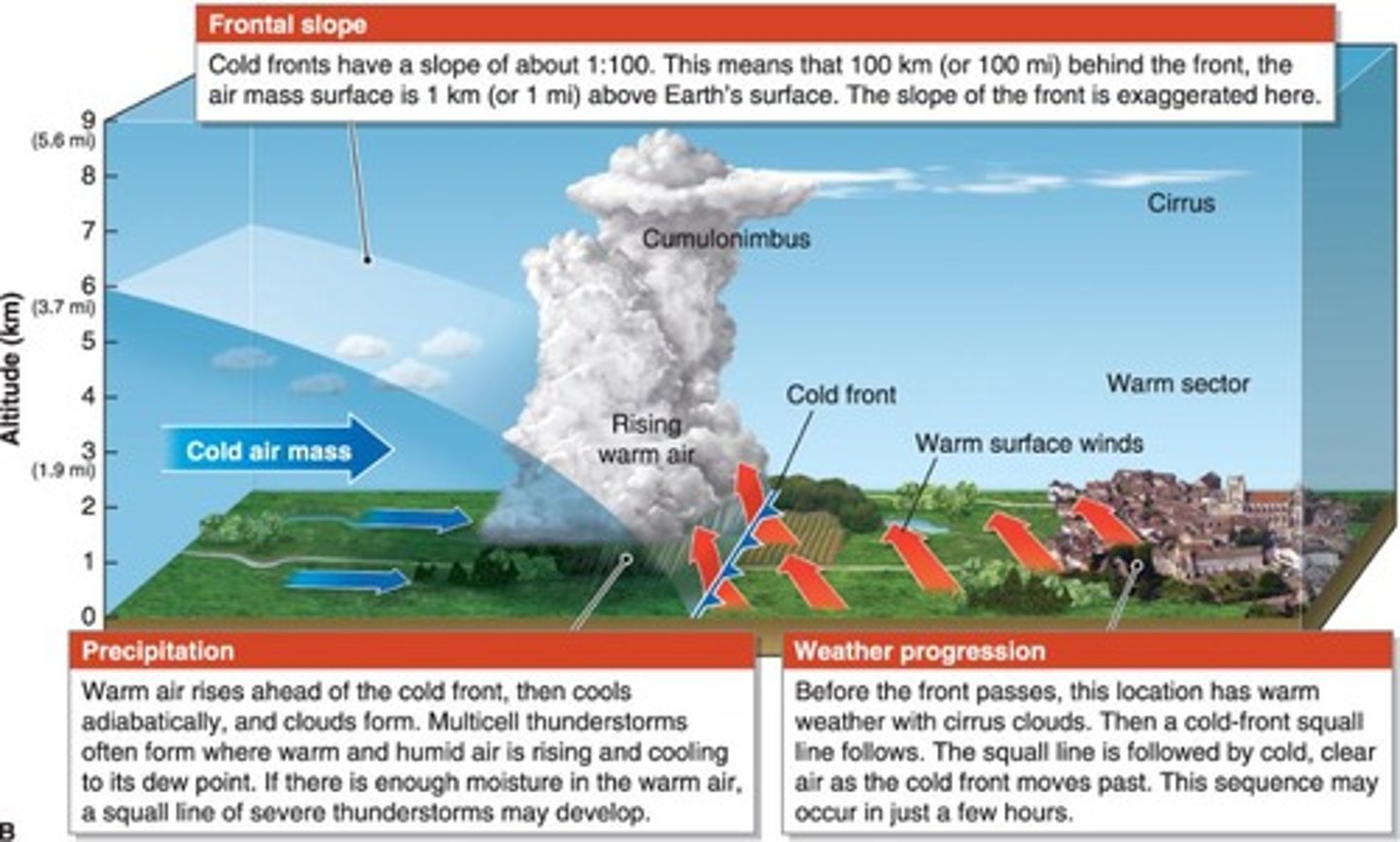
Funnel cloud
A tornado that does not contact the ground.
Tornado Geography
Every state and continent except Antarctica experiences tornadoes.
Most favorable latitudinal range for tornadoes
30° to 50°.
Canada
Country outside of the US that experiences about 100 tornadoes per year.
United States
Country that experiences the greatest number of tornadoes each year.
Peak month for tornadoes in the US
May.
Tornado formation
Not completely understood; only 25% of mesocyclones, 1% of thunderstorms, and 80% of middle-latitude cyclones with thunderstorms contribute to tornado formation.
Tornado characteristics
Includes noise described as 'thousands of freight trains', a vortex forming a funnel cloud, winds ranging from 65 to 200 mph, and pressure 40 millibars lower than surrounding air.
Average tornado wind speed
113 mph, with a record of 302 +/- 16 mph at 100 ft above surface.
Average tornado path
SW to NE.
Average tornado length
4 miles, rarely exceeding 15 miles.
Average tornado duration
Lasts about 10 minutes, with 5 minutes on the ground.
Tornado forward speed
Typically 10-20 mph but can exceed 60 mph.
Tornado width
Ranges from 100 yards to 2.6 miles, with the widest recorded in El Reno on May 31, 2013.
EF4-EF5 tornadoes
Type of tornadoes that tend to cause the greatest number of deaths.
Most common tornado path orientation
SW-NE.
Deadliest tornado outbreak date
March 18, 1925, resulting in 747 killed and 2027 injured.
Tri-State tornado
Tornado that killed 695 people and traveled 215 miles at speeds between 60-73 mph for 7 hours and 20 minutes.
Largest tornado outbreak
Occurred in the United States from April 25-28, 2011, with 355 tornadoes, including four EF5 tornadoes, resulting in 348 deaths and $11 billion in damage.
Improvement in tornado warning time
Increased from 0.3 minutes in 1978 to an average of 13 minutes in 2014.
Tornado WATCH
Issued by NOAA Storm Prediction Center meteorologists indicating favorable conditions for tornadoes.
Tornado WARNING
Issued by local NOAA National Weather Service meteorologists indicating a tornado has been reported or indicated by radar, posing a serious threat to life and property.